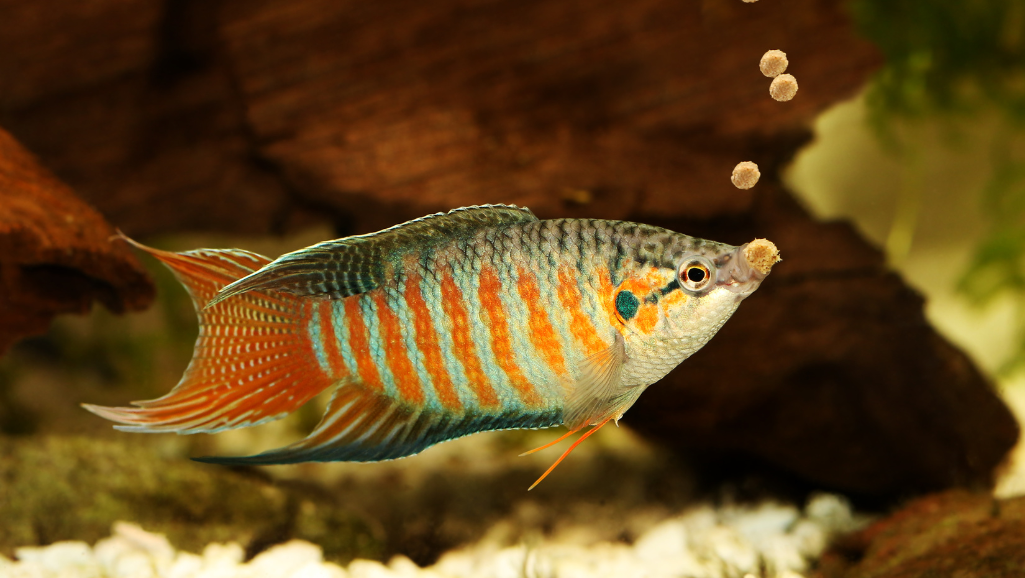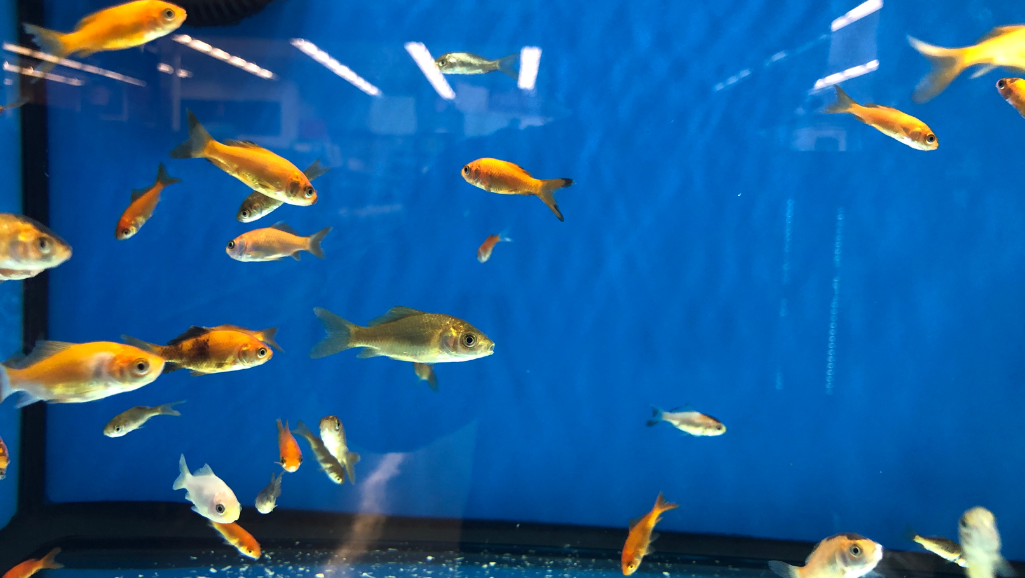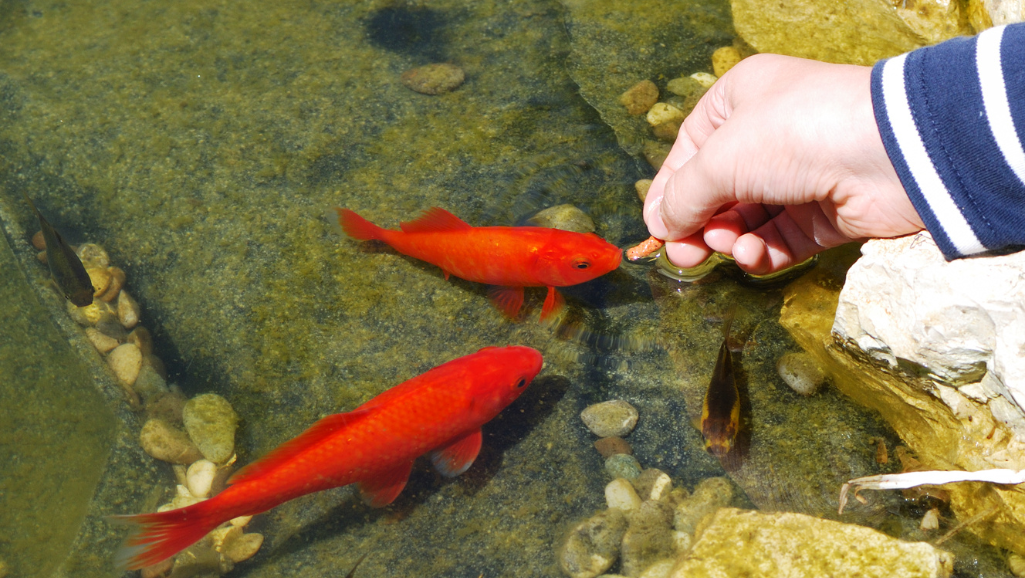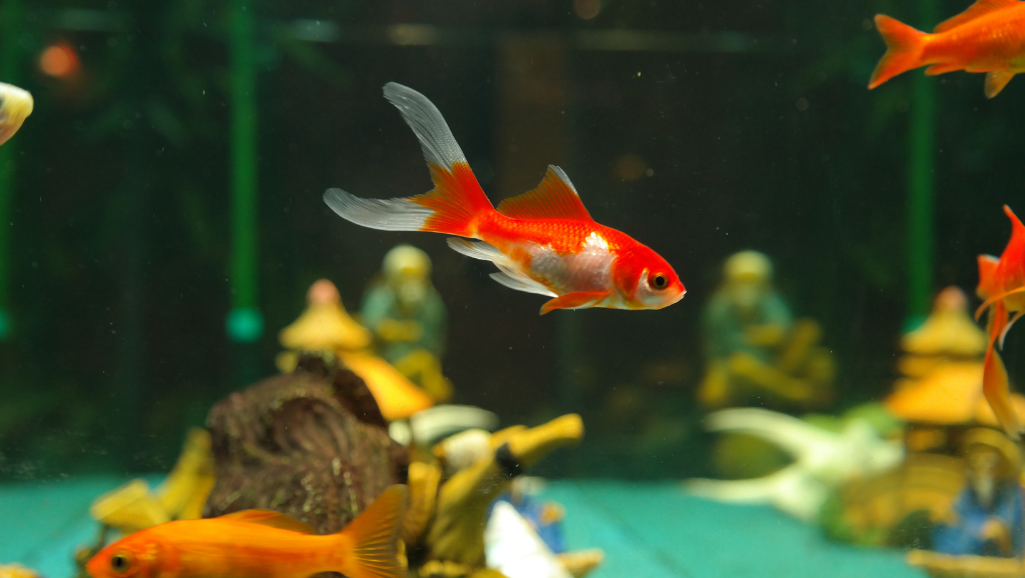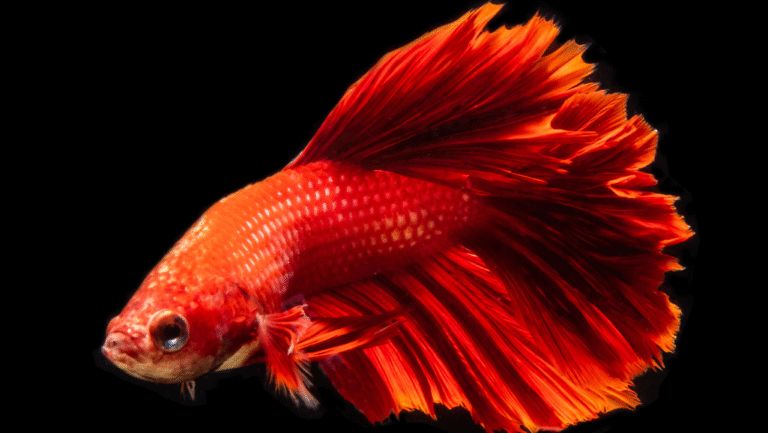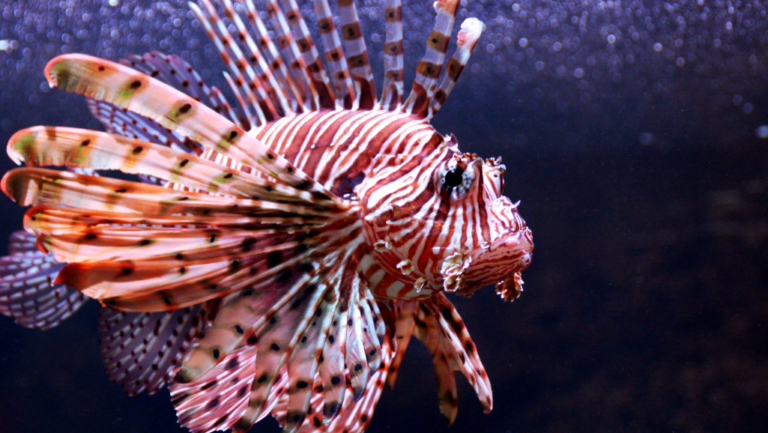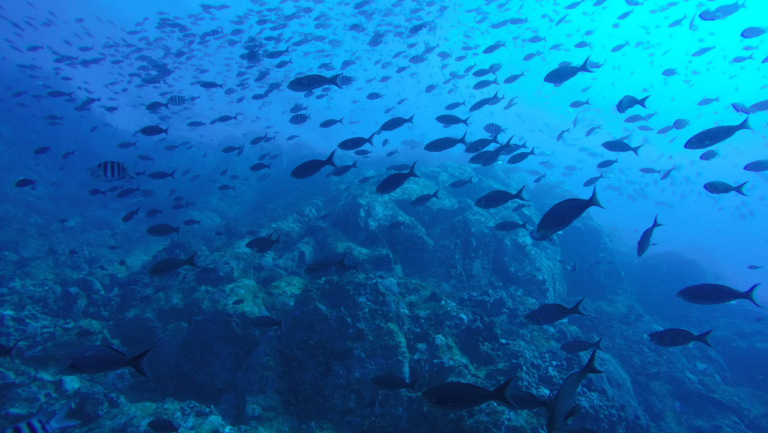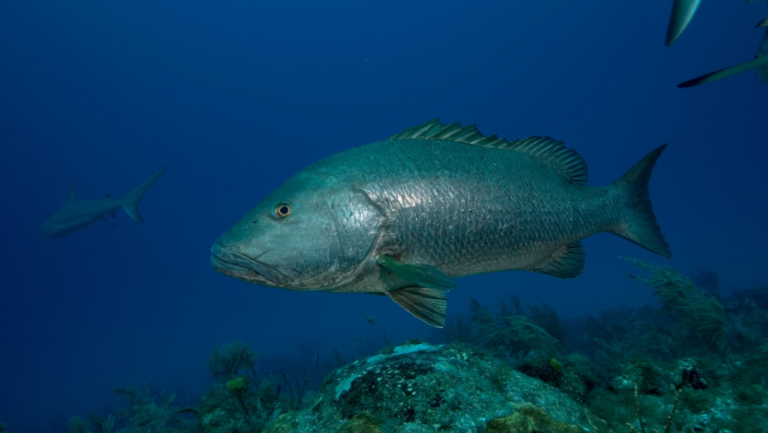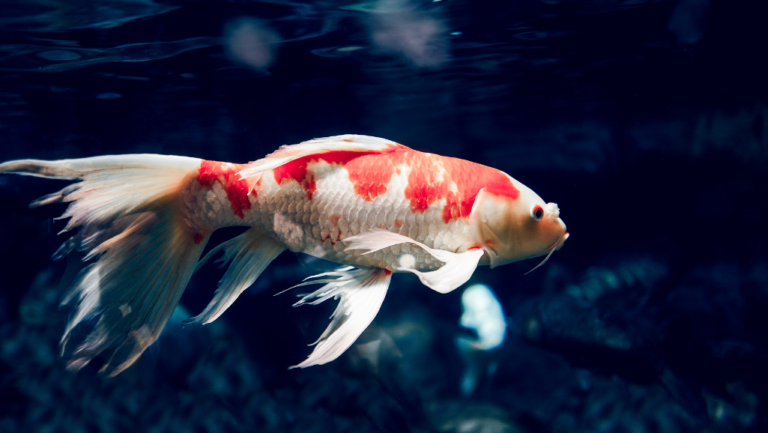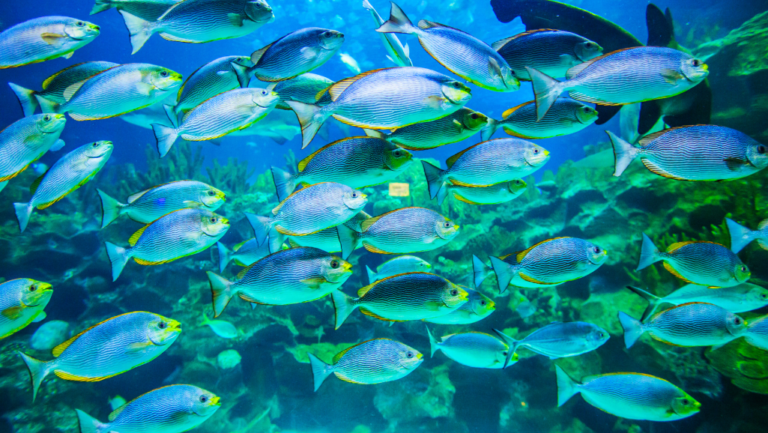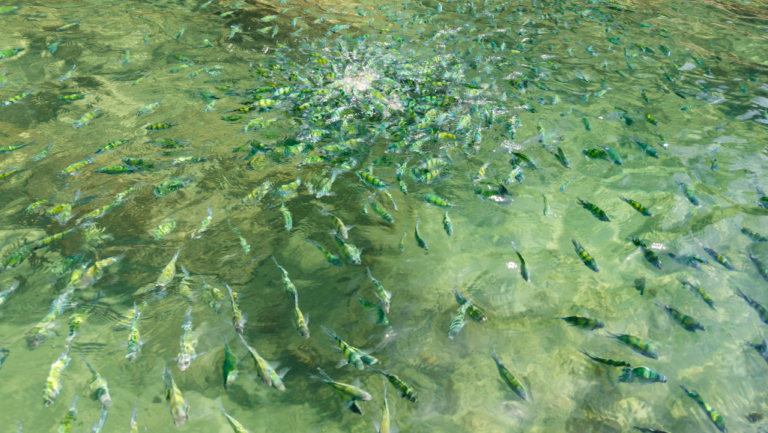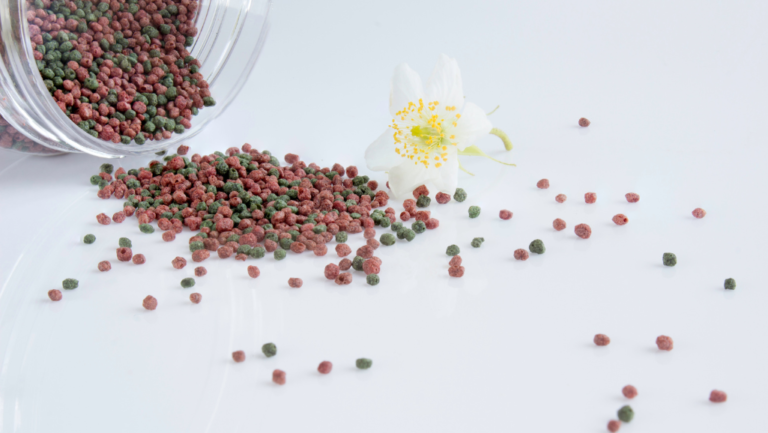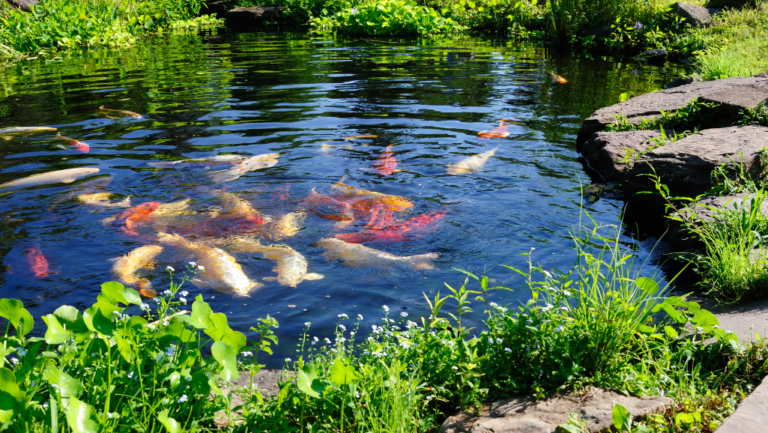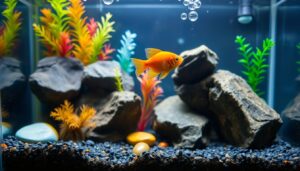As a responsible fish owner, knowing your pet’s diet is key. This guide covers how long fish can go without food. You’ll learn about keeping your aquarium healthy and how to care for your fish while you’re away.
Many aquarium lovers worry about their fish when they go on vacation. The good news is that most healthy adult fish can go a week or two without food. This depends on their species, age, size, and water temperature. Fasting can be good to avoid overfeeding, which is important for big fish that eat less often.
But, young fish and fry need to eat more because they have less fat. Fish that are active at night, like kuhli loaches and plecos, should eat after the lights go off. Knowing what your fish needs helps you feed them right.
Key Takeaways
- how long can fish go without eating
- Adult fish can survive 1-2 weeks without food, depending on species and conditions
- Young fish and fry need more frequent feedings due to lower fat stores
- Vacation feeders and automatic feeders can help during short trips
- Hiring a fish sitter is recommended for extended vacations to prevent overfeeding
- Proper aquarium maintenance before leaving ensures a healthy environment
In the next parts, we’ll talk about how long fish can survive without food. We’ll also cover feeding options for when you’re away. This guide is for both new and experienced fish owners. It will help you make the best choices for your fish’s care during holidays and more.
Factors Affecting Fish Survival Without Food
Several key factors determine how long fish can survive without food. These include the type of fish and their feeding habits, age, size, and the aquarium water temperature. The water temperature affects fish metabolism.
Type of Fish and Their Feeding Habits
Different fish species have different survival times without food. Herbivorous fish like goldfish and koi can go longer without eating. Carnivorous fish, such as cichlids and bettas, need to eat more often. Omnivorous fish, like guppies, fall in between.
Knowing your fish’s specific feeding needs is key to a good feeding schedule.
Fish Age and Size
The age and size of your fish affect their survival without food. Younger and smaller fish need to eat more often because they have faster metabolisms. For example, Neon Tetras can survive for about a week without food.
Larger fish, like Goldfish and Koi, can go two to four weeks without eating.
Water Temperature and Metabolism
The aquarium water temperature affects fish metabolism. Fish in colder water can survive longer without food. Fish in warmer water need to eat more often.
Healthy adult fish can survive from 3 days to 2 weeks without food. This depends on the species and water temperature.
By considering these factors and maintaining a healthy aquarium environment, you can keep your fish healthy and happy. Even when you can’t feed them regularly.
Feeding Options for Vacation Periods
Planning a vacation means making sure your fish are fed while you’re away. Luckily, there are many ways to keep your fish happy and healthy. You can use vacation fish feeders, automatic dispensers, or even hire a fish sitter.
Vacation fish feeders are great for short trips. They come in sizes for 2, 7, or 14 days. These feeders have food that slowly dissolves, making feeding easy. But, they might not be as nutritious as regular food, and can affect water quality.
They’re best for those who are away for a week or less and know a lot about fish care.
Automatic Fish Feeders
Automatic fish feeders are perfect for tech-savvy owners. They feed your fish on a schedule, even when you’re not there. Prices range from $25 to $60, which is a good investment for peace of mind.
But, make sure to pick a high-quality feeder to avoid overfeeding or problems.
Hiring a Fish Sitter
If you’re going away for a long time or have sensitive fish, a fish sitter is the best choice. Fish sitters charge about $20 an hour, while casual sitters cost around $10 per visit. Make sure to give them pre-measured food to avoid overfeeding.
Also, leave a contact number and an emergency contact to keep your fish safe while you’re away.
Before you leave, prepare your aquarium well. Clean the tank, top off the water, check the temperature, and inspect the filter. Make sure all fish are healthy. By doing these things and choosing the right feeding option, you can relax on your vacation knowing your fish are cared for.
How Long Can Fish Go Without Eating?
When it comes to aquarium fish care, many ask, “How long can fish go without eating?” The answer depends on the fish type, age, and aquarium health. Most fish can last 3 days to 2 weeks without food. It’s key to know what affects their fasting ability.
Older fish have more fat, so they can last longer without food than younger ones. Fish diets also vary by species. For instance, herbivorous fish need to eat more often, while carnivorous fish can go longer without food. Goldfish, being omnivores, have different feeding needs based on their diet.
Fish should only be fed what they can consume in 3 minutes to avoid overfeeding and water quality issues.
When you’re away, think about your fish’s feeding needs. Automatic feeders can feed fish up to twice a day for 2 weeks. But, it’s wise to have someone check on them every few days. This ensures their health and keeps the aquarium in good shape. Give clear instructions to fish sitters to avoid overfeeding and emergencies.
Overfeeding is a big problem that can harm fish and water quality. Fish may seem hungry, but don’t overfeed them. Stick to fish feeding schedules to keep your fish and aquarium healthy. Feed fish no more than twice a day, with food they can eat in 2-3 minutes.
Maintaining a Healthy Aquarium Environment
Keeping your aquarium healthy and stable is key for your fish’s well-being when you’re away. Proper aquarium maintenance, like consistent aquarium lighting and temperature control, ensures your fish stay healthy even when you’re not there.
Aquarium Lighting and Timers
It’s important to keep a day/night cycle for your fish’s health and natural behavior. Use a timer to turn your aquarium lighting on and off at the same times each day. This helps your fish sleep better and reduces stress.
When setting up your lighting timer, think about what your fish species needs. Most tropical fish need 12 to 14 hours of light a day. Some fish that are active at night might need less light.
Temperature Control During Vacations
Aquarium temperature control is crucial, more so during summer when room temperatures can get too high. If it gets over 80°F, turn on the air conditioning to avoid overheating. High temperatures can cause fish to stress and even die.
A sudden temperature change of even 2 to 3 degrees can shock your fish and cause health issues.
Think about getting an aquarium chiller or heater with a thermostat to keep the temperature stable. Check the temperature before and during your vacation to make sure it’s right for your fish.
Pre-Vacation Aquarium Maintenance Checklist
Before you leave for vacation, follow this aquarium maintenance checklist to keep your fish healthy:
- Clean the aquarium, removing any debris or algae buildup
- Top off the water to compensate for evaporation
- Check the water temperature and ensure the heater or chiller is functioning properly
- Inspect the filter and perform any necessary maintenance
- Examine your fish for signs of illness or stress and address any issues before leaving
By following these aquarium maintenance tips and making sure your aquarium lighting and temperature control are right, your fish will thrive while you’re away.
Conclusion
It’s vital to give your aquarium fish the right care and food, even when you’re on vacation. Knowing how long fish can go without eating helps a lot. For instance, betta fish can last up to 14 days without food, but it depends on their health and the tank’s conditions.
When you’re planning a trip, think about using vacation feeders or automatic fish feeders. These tools help feed your fish at set times, preventing overfeeding. But, remember to keep the feeding schedule balanced to avoid health problems like obesity in fish.
Keeping your aquarium healthy is also crucial. Make sure the lighting, temperature, and tank cleanliness are all in check before you leave. By following these pet fish care tips, your fish will stay happy and healthy, even when you’re away.
